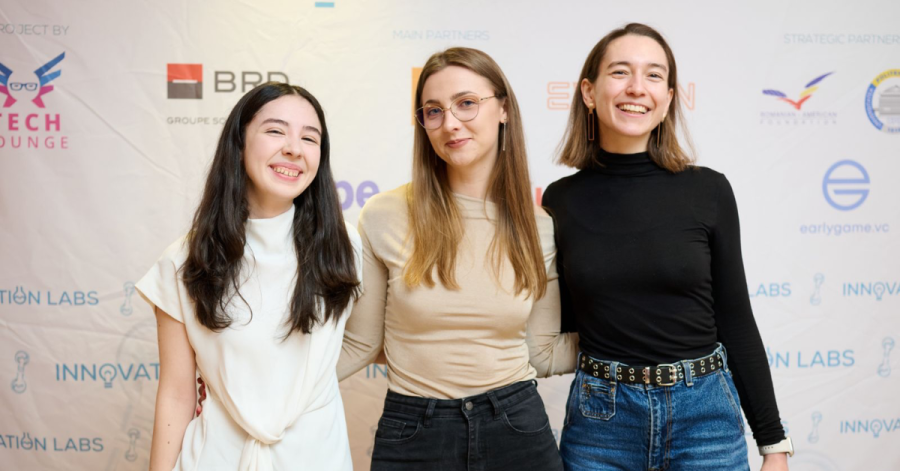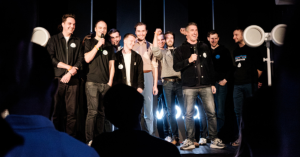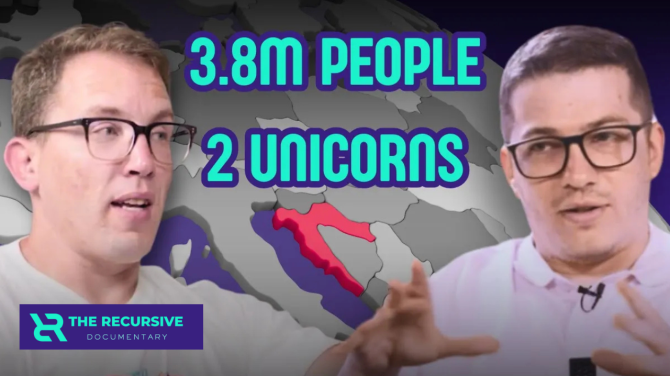It’s easy to see why early‑stage founders are energized by the possibilities of AI. Platforms like OpenAI’s, Lovable, Figma have dramatically lowered the technical and financial barriers to entry. What once required months of development and a full engineering team can now often be built and tested in days—even by solo founders or small, non‑technical teams.
This shift is especially meaningful in the pre‑product‑market‑fit stage, where speed of iteration matters more than polish. For founders across Central and Eastern Europe, it opens up a rare window: the ability to test ideas, get early users, and refine products without raising capital or committing to costly hires.
Mara Ilie, founder of Lifetoon—an AI‑based platform that turns life moments into illustrated comics—used exactly this approach. In March 2025, her team of five had one idea and zero lines of code. By May 6, 2025, after just 24 hours of sprinting, more than 100 users were already exploring their own Lifetoon stories.
Below, she breaks down the precise mix of AI tools that took them from blank page to live MVP—and explains how each contributed to the sprint’s success.
The AI Orchestrator
Tools: Runway Gen‑2, Leonardo AI, Gemini 2 (Google), GPT‑4o (OpenAI) + Render for fast deployment
How they used it
Before investing in costly fine‑tuning or building custom models, the team ran parallel tests across multiple generation engines—Runway Gen‑2, Leonardo AI, Google’s Gemini 2 and OpenAI’s GPT‑4o. They measured character drift, style coherence and inference cost, then automated the entire pipeline—from raw story prompt to finish comic panels—using existing APIs. Finally, Render powered rapid deployment, letting Lifetoon go live within hours of locking in the orchestration logic.
Impact
By validating on existing models, Lifetoon saved at least €30. 000 and several months of R&D they would have otherwise sunk into bespoke training—time and money they reclaimed for user validation.
Market Intelligence
Tools: Grok (xAI), ChatGPT (OpenAI)
How they used them
The team crafted parallel prompts targeting different user segments, asking each model to map out TAM(Total Addressable Market)/SAM (Serviceable Available Market), key pain points and substitute solutions. Outputs were merged into a side‑by‑side spreadsheet and enriched with fact‑checks drawn from public reports and interviews. A deep‑dive competitive matrix then tracked revenues, funding history, growth rates, product‑marketing angles, distribution channels and user reviews.
Impact
What began as two AI‑driven drafts turned into a “living spreadsheet” the team revisits before every sprint—ensuring they build on verified market insights rather than assumptions.
Note Taking
Tool: Krisp AI
How they used Krisp AI
Krisp AI recorded every stand‑up and customer discovery call, auto‑generating clean transcripts and highlighting decisions, blockers and action items.
Impact
Each team member reclaimed roughly 25 minutes per day that would otherwise be spent on manual note‑taking and context‑sharing—time they instead devoted to iteration and testing.
Analytics & UX Feedback
Tools: Microsoft Clarity, Dovetail
How they used Microsoft Clarity
The team pulled heat maps from their onboarding funnel and fed screenshots into GPT‑4o to cluster “dead‑click” zones. They then moved CTAs and restructured key pages.
Impact
Within three days, those tweaks drove over 100 waitlist sign‑ups.
How they used Dovetail
All interview transcripts were uploaded to Dovetail and tagged by theme—pain points, emotional cues, feature requests and objections. Visual clustering surfaced recurring patterns.
Impact
Research time fell dramatically, and the team could prioritize roadmap features based on real user language rather than gut feeling.
Concept & Prototype Bridge
Tool: Lovable
How they used Lovable
Raw story descriptions and crude wireframes were fed into Lovable, which spun up an interactive prototype in under an hour.
Impact
Developers began each sprint with a shared mental model of the product, rather than a stack of static slides—speeding hand‑offs and reducing misalignment.
Website Build
Tools: Framer, Figma
How they used Framer
Figma components were imported into Framer, which suggested responsive breakpoints and semantic tags. The team tweaked the micro‑copy manually.
Impact
Their first landing page went live in six hours—what would normally take a front‑end developer five days.
How they used Figma
Designers built UI/UX flows, design systems and interactive prototypes directly in Figma, allowing 2–3 layout variations per sprint.
Impact
High-fidelity prototypes eliminated hand‑off bottlenecks and ensured consistency between design and development.
Marketing Performance & SEO Ops
Tools: Google Analytics, Google Tag Manager, Google Search Console, MailerLite
How they used them
– Analytics & Tag Manager: Tracked onboarding funnel events (e.g. “Create a Comic” clicks) without dev support.
– Search Console: Monitored indexing and keyword performance, which uncovered a meta‑structure issue.
– MailerLite: Built segmented email flows for onboarding, waitlist nurturing and product updates.
Impact
A quick meta fix doubled organic impressions in one week, while conversion‑level insights honed CTAs and copy. Email flows kept users engaged without spamming.
Productivity & Collaboration Tools
Tools: Jira, Notion, Miro
How they used Jira
Custom boards mapped AI orchestration workflows alongside sprint backlogs and epics.
Impact
Clear visibility prevented duplicated work and kept the team aligned during rapid iterations.
How they used Notion
Notion served as the single source of truth for specs, meeting notes, roadmaps and research.
Impact
Async collaboration became frictionless and context‑switching dropped to near zero.
How they used Miro
Miro whiteboards captured brainstorming sessions, customer‑journey maps and post‑interview feedback clusters.
Impact
Visual plans turned messy ideas into actionable tasks, accelerating decision‑making in both workshops and async reviews.
Content Creation
Tool: Canva
How they used Canva
With shared brand kits and templates, anyone on the team could produce social visuals, pitch decks and waitlist updates—no advanced design skills required.
Impact
Canva ensured visual consistency and saved hours of back‑and‑forth, even during crunch weeks.








